The Korean Folk Village in Yongin, near Seoul, is one of my favourite places to visit. I go there yearly to walk around the themed garden park and look at the old-style buildings. It makes for such nice photos - all four seasons!
Actually, I took these pictures in December 2019. About 2 years ago in early 2020, I published a blog and wrote:
"Next time, I plan to introduce the more wealthy areas typical of the ruling classes or large towns and capitals."
Well, the wait is over and it's finally next time. Unfortunately, I deleted that old blog post along with the rest of them, but I kept an archive and have the photos stored. In any case, I've visited a few times since then, but these photos share a completely different story.
Welcome to the richer side of life in renaissance-era Korea during the later years of the Joseon Dynasty when kings ruled and before Western and Japanese corruptions ruined the hermit kingdom. In my previous story, we focused on the life of the common folk, they were illiterate people who led poor and simple lives. Now we will focus on the richer townsfolk and local elite.
As you can see the houses are quite nice, both inside and out, especially considering these are what people lived in hundreds of years ago. Furniture and decor that would cost a small fortune these days, sold as 'rare antiques' were the height of fashion for those who could afford the finer things in life.
While the peasants had mostly farming and household tools and lived in straw huts with clay floors and mud walls, the rich lived in what looks like an older Korean grandmother in the village or small town may dwell in today. If only I could afford such beautiful antiques.
Back in the day, most educated Koreans were either Buddist Monks or Confucian scholars. The scholars had a chance to be part of the government. Writing, printing and calligraphy were all highly prized and practiced skills. Although the native Korean writing system, Hangul was developed about 500 years ago, scholars still used Chinese-style writing until around 100 years ago.
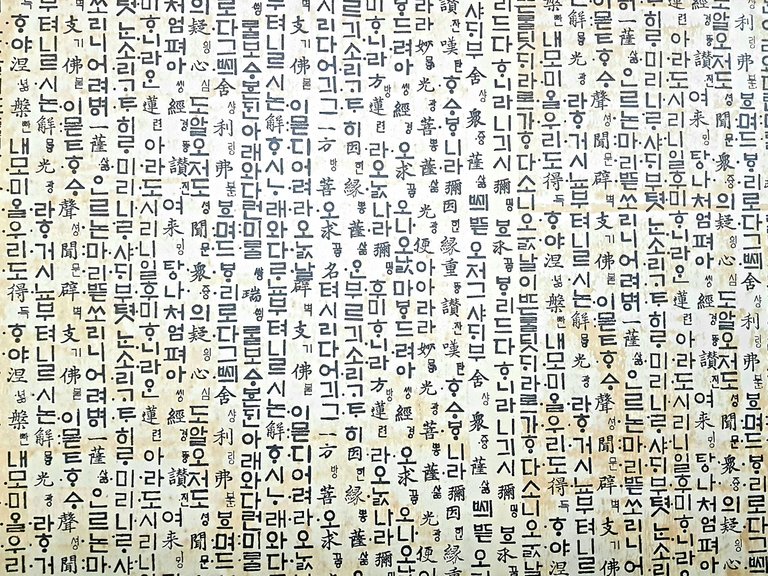
I love Korean printed text and this design is a common wallpaper or packing material these days because of the lovely aesthetics. The native Korean writing system, called Hangeul, is one of Korea's proudest cultural achievements and is actually really easy to learn and scientific. There are only 24 symbols - less than English, not thousands as with Chinese. However, when the writing system was first developed, it was considered beneath the nobility and scholarly class. Do you see a symbol that looks like a square? ㅁ That's the 'm'-sound and do you notice the shape of your mouth and position of your tongue when you make that sound? Yup, also resembles a square. The shapes aren't random or based on pictures of animals like many other writing systems.
Back to the village, we can see a nice stone wall and an elevated house beyond it. Koreans traditional never lived in multi-story houses so common in the cities nowadays, at best it was just storage underneath an elevated hut. It wasn't to prevent flooding, Koreans just wanted to see over the walls. The walls were meant to keep the women and children contained. Only men, servants and poor women would regularly leave their little family compounds. It was a mark of wealth for your wife to never be seen in public, lol.
Inside we can see it is relatively simple. Actually, that's where the kimchi and sauce pots are stored. Notice the cheaper-looking fence. This is what poorer people built walls with. Personally, I think this is just a modern design or theme park oversight as someone wouldn't have put that next to such a nice dwelling back in the day. Also, there is no need for a secondary wall. It's to keep tourists out. Oh well, I'll overlook what I think are small historical inaccuracies. I still like the place.
Here is a closer look over that wall. You can see the poorer huts off in the distance. There is also a stream in between. I like to think that the bridges would have been guarded along with the town gates to make sure no unwanted peasants crossed over to cause trouble during the night. Fortunately, all the manservants in the richer houses were gelded so they were less likely to cause trouble. It was also the height of fashion to have a eunuch around. Although in fairness, I think they were only available for the nobility. You know you are privileged when you can demand your servants have their manhood removed.
This was the local administrator's office. I didn't go in and I've never seen the doors open which probably means it's modern administration or nothing behind it. People sure do like taking photos on the steps. It took me forever to get this photo. Even though it's nothing special, I'm damn proud of it.
Over here we have the steps leading up to the local Confucious academy. The sons of the richer members of society required a rigorous education and only Confucious scholars could teach all the knowledge required to have a chance at passing the state exams. Korea, at that time, had a very similar system to China. Although the CCP destroyed much of Chinese traditional culture, Korea still maintains some of it. They still have their state exams, too. Poor high school students.
Here is the summer classroom. Notice the open concept and the large overhanging roof. The roof keeps things shaded and the summer monsoon rains out. This would have been a great place to spend the hot summer afternoons studying, listening to lectures or copying poems.
This is the local Confucious shrine. Notice the colour here is red. If you've seen Korean palaces and Buddhist temples, it looks similar. These places were used to store ancestor tablets of important people. Because it is in a Confucious Academy, I like to think it's for them, but I really don't know. It's a folk village and is often used for filming historical dramas. It's not an actual historical site.
At last, we arrive at the winter classroom. The doors are closed because it is summer. This classroom would have had iron braisers and underfloor heating to keep it warm in the winter. Actually, part of the tuition involved buying charcoal and firewood to help heat the place. There were also a few smaller buildings around for teachers and students who didn't live in the area to sleep and cook in. I didn't include those pictures as they aren't as interesting.
Here we come to our last rich person's villa. There were actually a few, but I skipped some that look more like movie sets, were too busy, or were royal villas. This one is much closer to the poor part of town than the previous one. Here I'm actually on the villa grounds looking out at the gatehouse. You can tell someone is rich when their gatehouse looks this nice. There were two small chambers probably for the guards or servants. If you put them by the gates, you can blame them when unwanted visitors come in.
We can see the chimney and views of the houses. Actually, there are two houses here. This was common as one was for the summer and the other for the winter. In this case, the chimney is separate from the house which implies wealth. It also means the kitchen wasn't attached to the house, so servants would bring it across the yard and your house wouldn't smell like cooking. Korean food is delicious, but boy does it smell. I couldn't imagine the smell of some of it before refrigeration and ventilation fans. Yikes!
Finally, we end off with my favourite view. This is looking through the gate into the compound. Imagine how nice this looks in spring? Well, I don't have to imagine for long, I'm going to visit tomorrow because it's my mother inlaws birthday.
If you are ever in Korea, the Yongin Folk Village is definitely worth a visit. It's about an hour south of the city and easy to get to. Everyone knows it and all the hotels sell tickets and tour packages. I recommend you dress up in traditional clothing if you go and do cosplay (Koreans' don't give a shit about cultural appropriation unless you are being insensitive), I believe you get a nice discount, too. Here is the official website: https://www.koreanfolk.co.kr/multi/english/
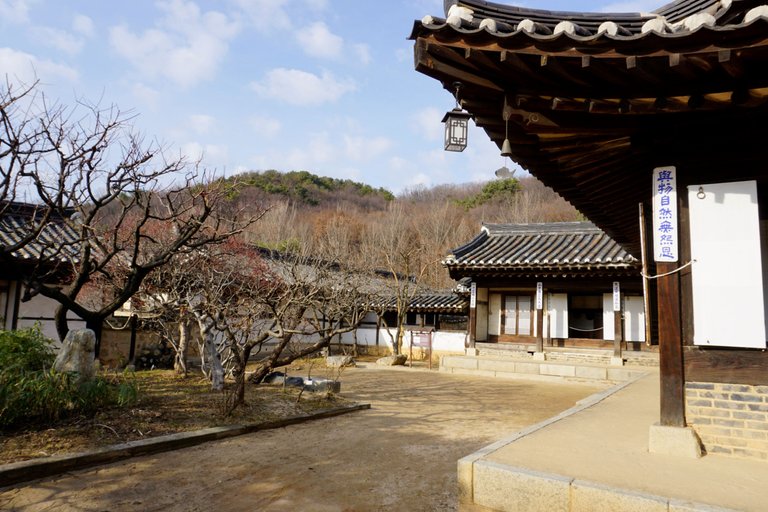
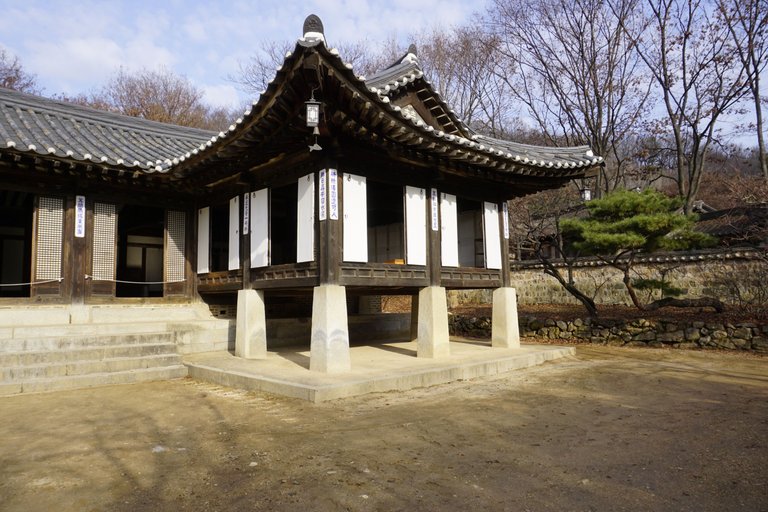
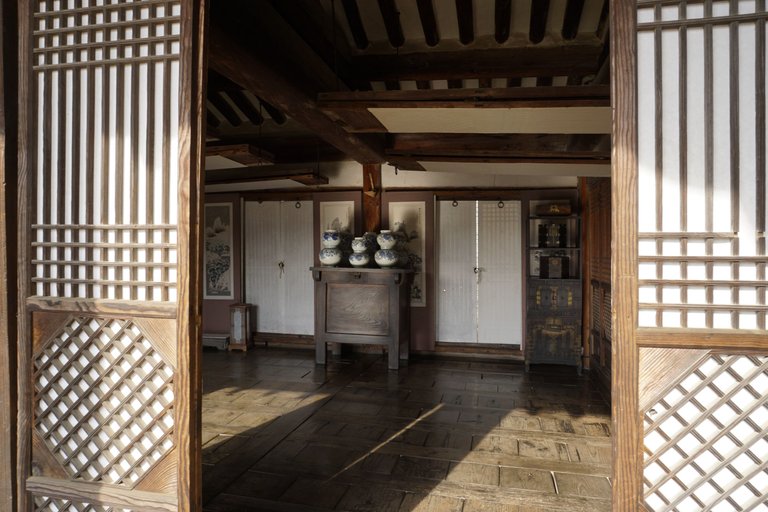

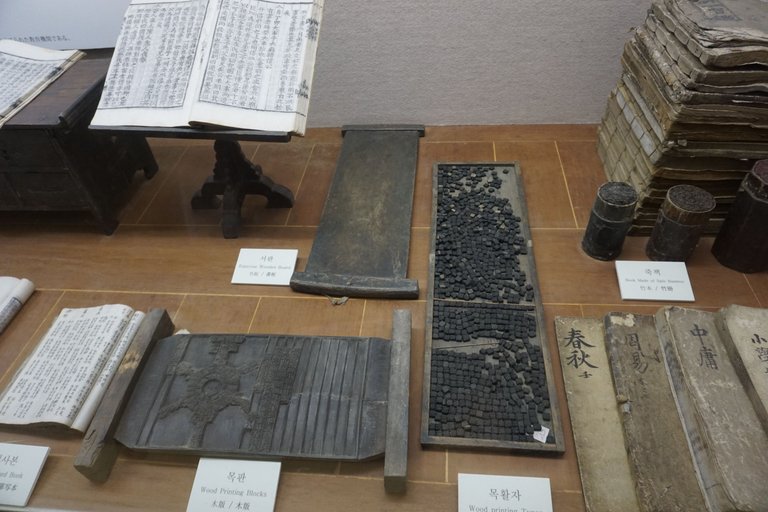
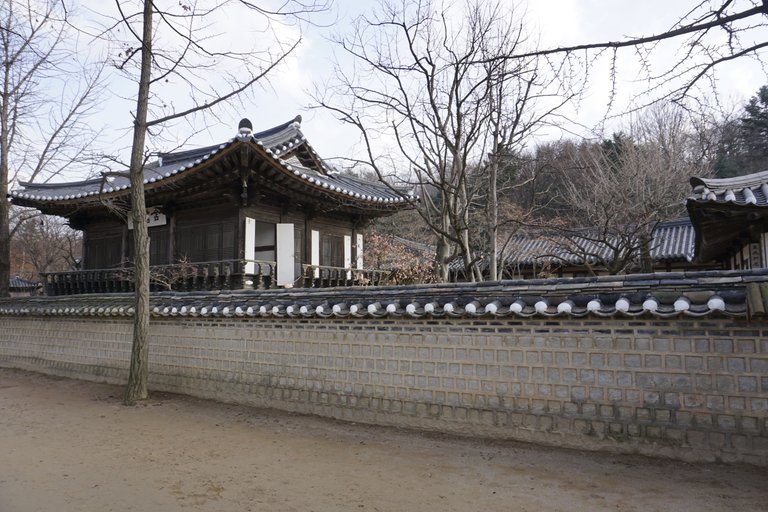
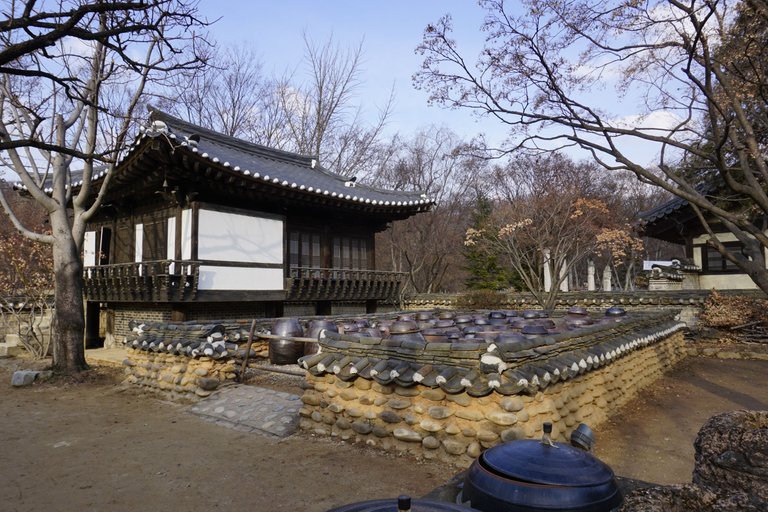
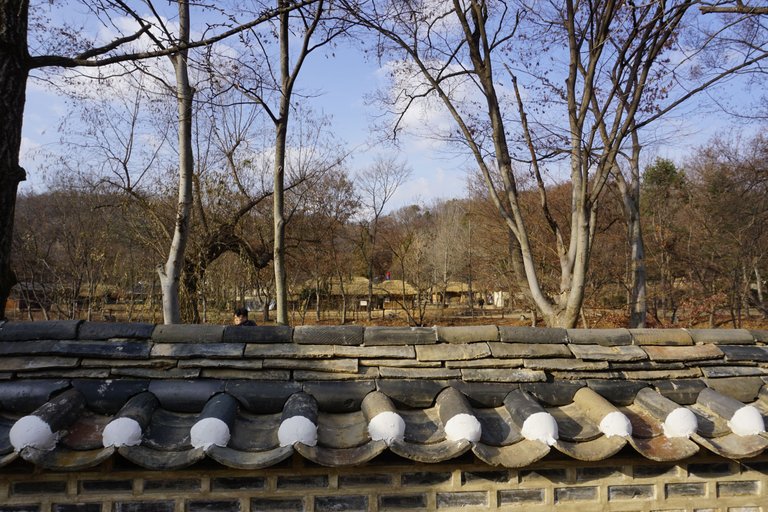
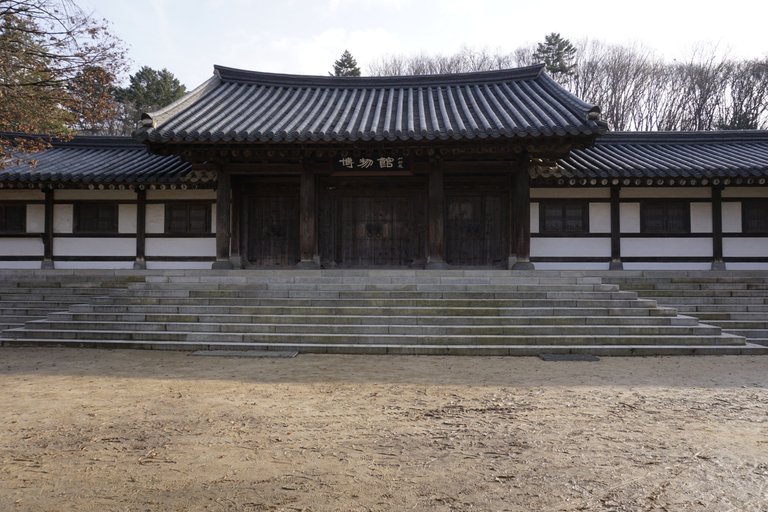
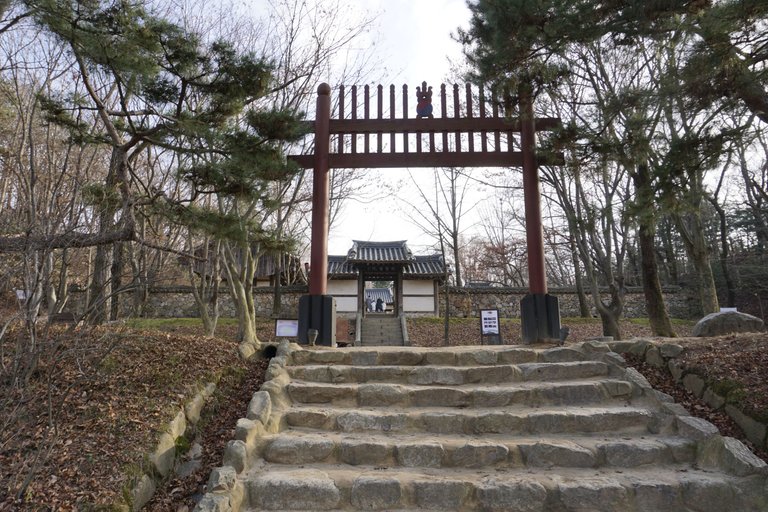
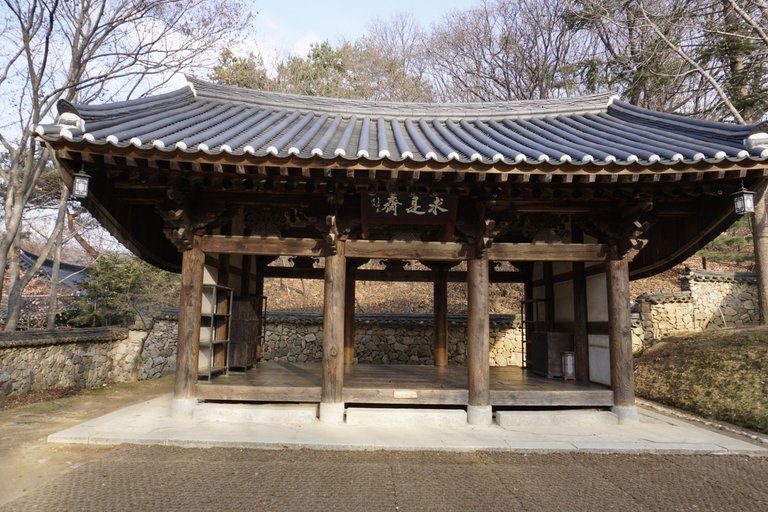
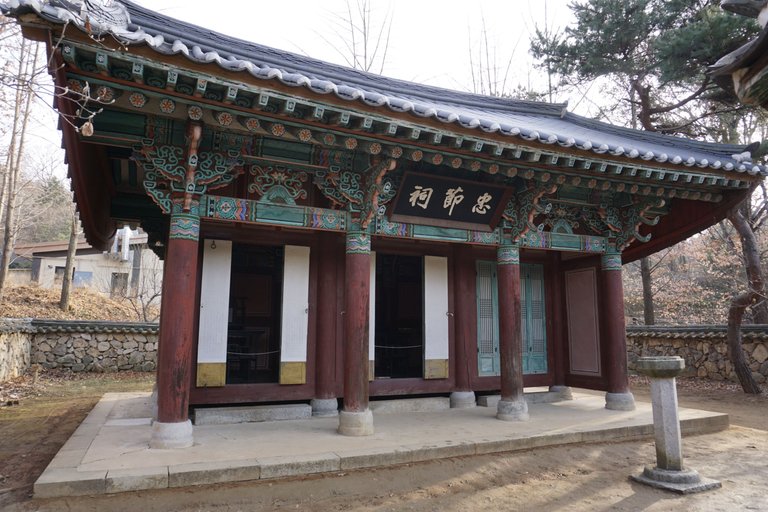
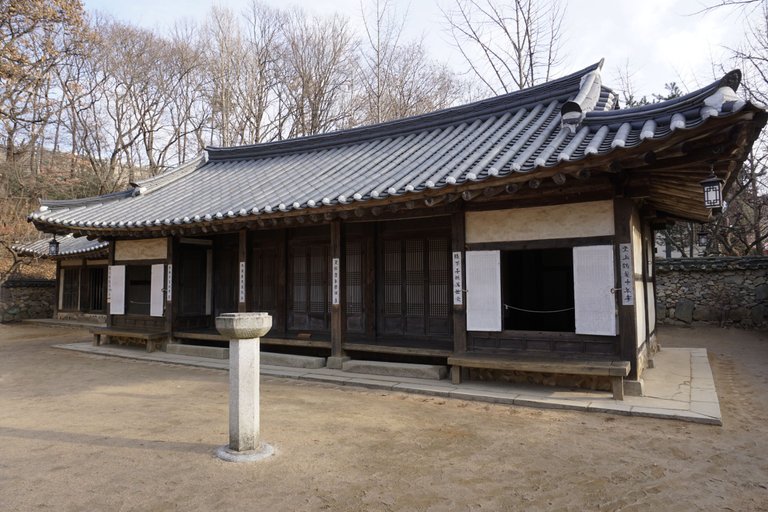
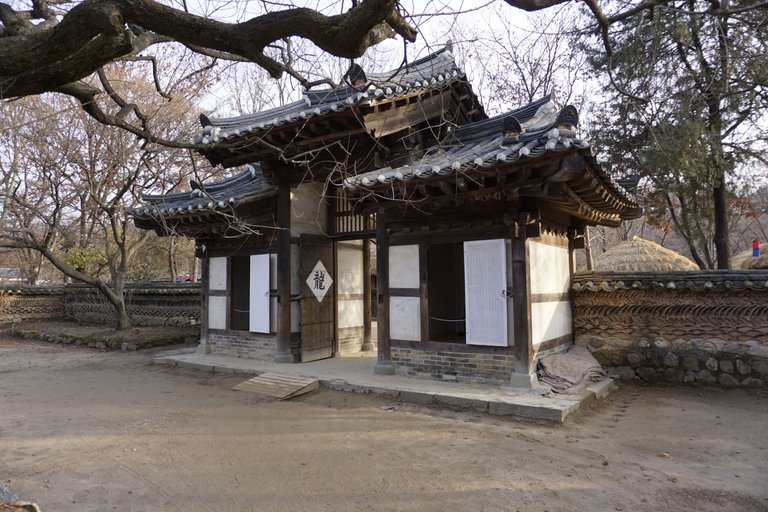
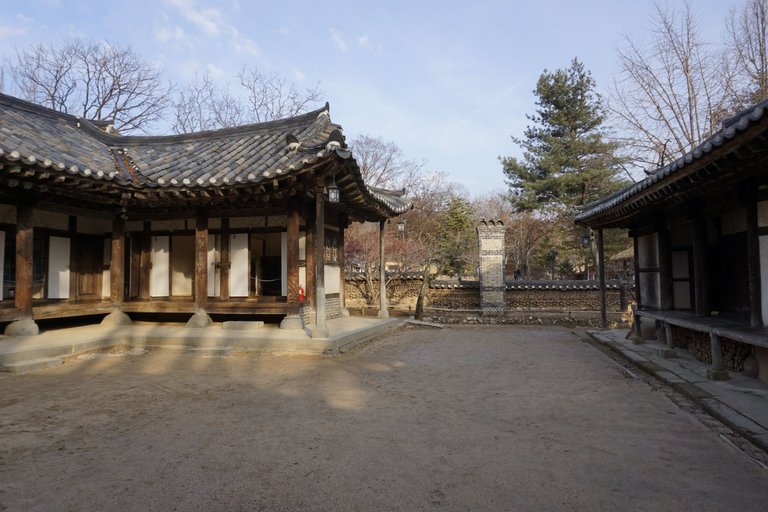
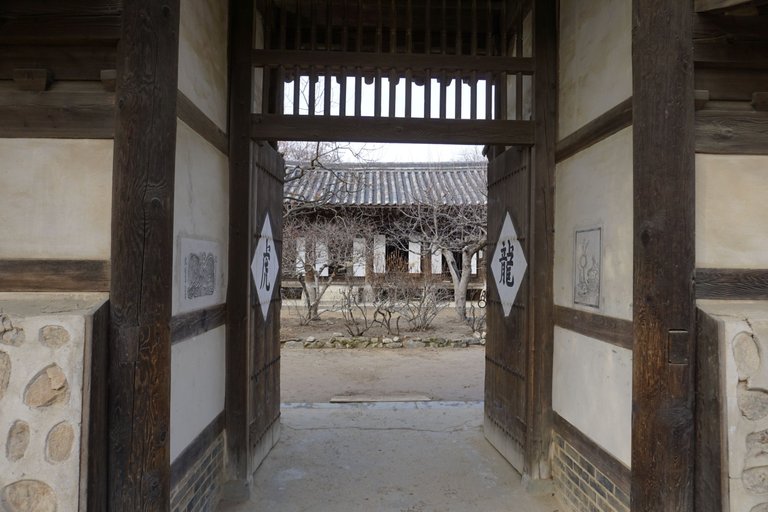
Congratulations, your post has been added to Pinmapple! 🎉🥳🍍
Did you know you have your own profile map?
And every post has their own map too!
Want to have your post on the map too?
The rewards earned on this comment will go directly to the person sharing the post on Twitter as long as they are registered with @poshtoken. Sign up at https://hiveposh.com.
Daily Travel Digest #1524.
Become part of our travel community:
- Join our Discord
- Learn more about our travel application
Hiya, @LivingUKTaiwan here, just swinging by to let you know that this post made it into our Top 3 in Your post has been manually curated by the @pinmapple team. If you like what we're doing, please drop by to check out all the rest of today's great posts and consider supporting other authors like yourself and us so we can keep the project going!Beautiful!!!
Thank you kindly!